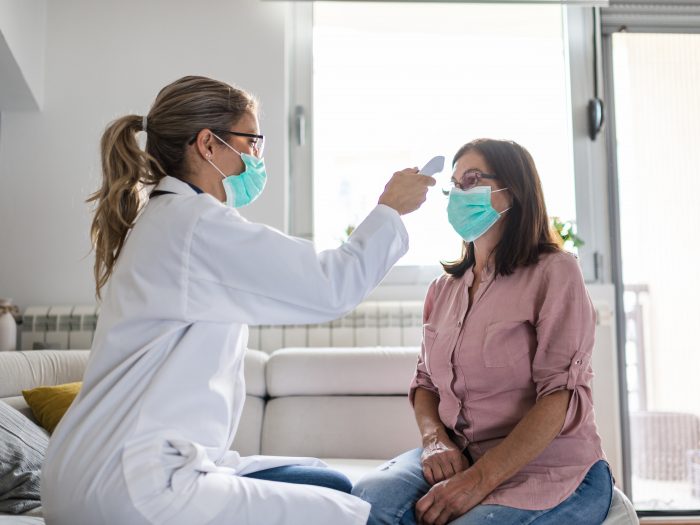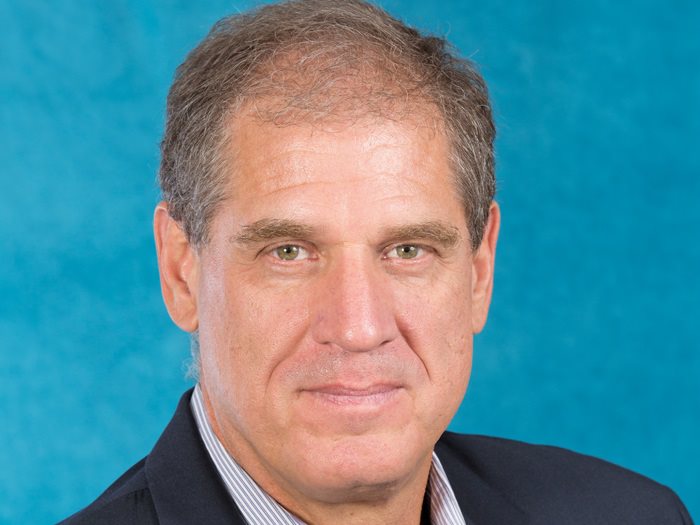OSHA’s Emergency Temporary Standard for COVID-19 Is Out. Here’s What Employers Need to Know

At long last, the Occupational Safety and Health Administration (OSHA) has finally issued an emergency temporary standard (ETS) detailing how workplaces should mitigate the spread of COVID-19.
Many thought the standard would apply to businesses of all sectors conducting in-person operations, however the standard, which focuses solely on protecting health care workers from COVID-19, is narrower than expected.
Though the standard is limited in scope, that doesn’t mean employers in other sectors can abandon COVID-19 precautions. Employers across industries should still take action to protect their workers in line with CDC guidance.
“The new ETS guidelines provided by OSHA are very comprehensive for health care providers, but for the rest of the workforce, it puts the burden of health and safety on employers,” said Jikku Venkat, co-founder and CEO of ReturnSafe, a software company focused on helping employers manage infectious diseases.
“Business leaders are now left to their own devices to decide how to proceed with mask mandates, social distancing, temperature checks, vaccine verification, employee testing and more.”
Given how long it took OSHA to issue the standard, some are speculating that the ETS could pave the way for a new standard for infectious disease safety within the workplace.
The Emergency Temporary Standard at a Glance
The new standard, which was released June 10, lays out a number of standards health care facilities will have to implement to mitigate virus spread.
It requires health care facilities, some nursing homes and home health care services to conduct a risk assessment and to have a written plan for how they will mitigate virus spread.
Additionally, health care employers must provide their workers with N95 masks and other personal protective equipment. Some exemptions are in place for health care employers that screen out patients who may have COVID-19.
OSHA also said it would update the standard as CDC guidance changes.
Some parts of the standard are expected to receive criticism. The ETS requires employers to provide workers with paid time off to get vaccinated and to recover from any vaccine side effects.
“I think you could argue that OSHA got out of their swim lane a little bit on a few issues,” said Gary Pearce, chief risk architect at Aclaimant. “I think some people might rightly say, ‘Well, that’s OSHA going beyond what OSHA ought to be doing.’ ”
Notably absent from the standard are other high-risk businesses, including correctional facilities, warehouses and factories, causing some to criticize OSHA.
“I think that they were fairly subject to criticism,” Pearce said. “Why do it for health care, where there’s a very high degree of preparation, as opposed to meatpacking, poultry and corrections facilities?”
“These industries in particular experienced a wake-up call during the pandemic about infrastructural weaknesses in the country’s ability to fight infectious disease outbreaks,” Venkat added.
OSHA said the standard focuses on health care workers, because they are most at risk of contracting the virus.
In addition to the ETS, OSHA has issued updated guidance for employers whose businesses do not fall under the jurisdiction of the ETS.
The guidance recommends granting workers paid time off to get vaccinated, encouraging workers who have tested positive for COVID-19 or who show symptoms of the disease to stay home, implementing physical distance, and providing face masks for workers, among other things.
It also notes that vaccinated workers may not need to take all the same precautions as unvaccinated workers.
The standard has already resulted in a citation. On June 15, a Rhode Island medical practice owner received a citation for failing to implement proper safety measures after six employees tested positive for COVID-19.
A New Infectious Disease Standard?
As vaccination rates rise and more U.S. cities open up, some may be questioning why OSHA chose to issue an ETS so late in the pandemic.
The process of issuing the standard has been in progress for months, with President Biden initially calling for a standard before March 15. That day came and went, however, without a standard being issued, and the process stalled until April when the Department of Labor submitted its proposed rule to the White House’s Office of Management and Budget for review.
“If they had issued this rule three months earlier, which with the change of administrations may not have been practical, it probably would have had a lot more power behind it than it does at this late stage,” Pearce said.
Some have speculated that OSHA issuing a standard so late in the pandemic indicates that the organization is pondering new safety standards for preventing infectious disease in the workplace as a whole.
“At this point it really, to me, stands more as a way to bridge between COVID on the one hand and a permanent infectious disease standard on the other,” Pearce said.
“Infectious disease preparedness is essential for workplace safety. ETS definitely opens up the possibility of infectious disease preparedness being extended to other industries besides health care, including schools, factories, meatpacking plants and other areas where people density is very high that were hardest hit by COVID-19,” Venkat added.
The process of turning an ETS into a permanent standard is pretty typical, Pearce said. ETS are supposed to become permanent within six months, but it may take OSHA more time as it did with issuing the standard in the first place.
OSHA has acknowledged this fluidity in the ETS, saying “OSHA will update the standard, if necessary, to align with CDC guidelines and changes in the pandemic.”
“When there is an emergency temporary standard, it must, by definition, be the basis for a permanent standard and it’s supposed to all happen in six months,” Pearce said.
“OSHA, many years ago, tried to do an infectious disease standard and didn’t succeed. So, I think they concluded that the time is right, that circumstances are meaningfully different, and that there’s an acceptance of the notion that it’s more than just about COVID-19.”
Venkat concurs that in the wake of the pandemic, OSHA and employers need to think differently about workplace safety and their responsibility for mitigating the spread of viral diseases.
“We are now in a world where future infectious disease outbreaks have the potential to become future pandemics, so infectious disease standards will be essential. Moving forward, OSHA needs to create an ongoing infectious diseases standard or risk repeated loss of lives and businesses,” Venkat said. &










